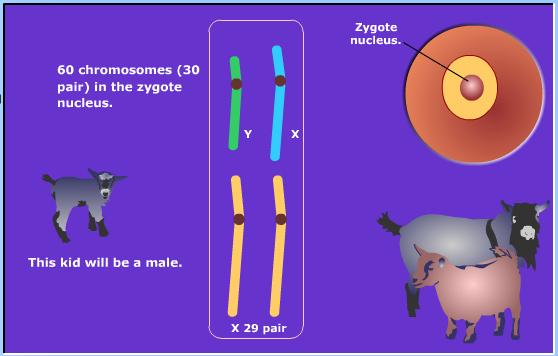The Biology of the Goat
Meiosis
The word meiosis is from a Greek word meaning "to diminish".
The gametocyte (precursor to an egg or sperm) like all of the other cells in the goat's body has a nucleus which contains the genetic material.

Goats have 60 chromosomes.
The chromosomes exist as very thin threads called chromatin when the cell is not actively dividing.
The threads of chromatin contain the DNA molecules.

When the cell prepares to divide the chromatin material coils up
so that the chromosomes resemble thick rods.

Each chromosome has two arms that extend out from a central region called a centromere.
Chromosomes come in different sizes and shapes.
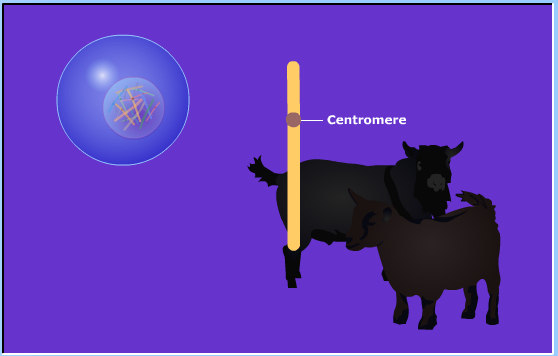
If you magnify a chromosome that has been specially stained it has a pattern of light and dark bars.
Each bar indicates where the different genes are located.

Chromosomes come in pairs called homologs which have the same genetic information.
One set of chromosomes comes from the father and one set comes from the mother.

When the cell prepares to divide each chromosome makes a copy of itself.
The duplicates, called sister chromatids, stay attached at the centromere.
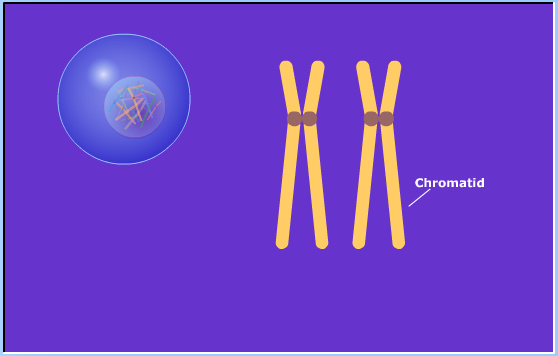
The male goat has 30 chromosome pairs.
30 chromosomes came from his sire and 30 came from his dam.
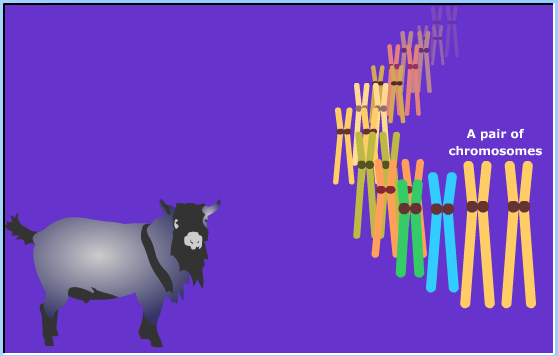
One pair of chromosomes are called the sex chromosomes.
Male goats have one X chromosome and one Y chromosome.
The remaining 29 pair are called autosomes.

The chromosomes have duplicated in the primary spermatocytes located
in the seminiferous tubules within the testis.
The male goat makes new primary spermatocytes everyday of his life.

To simplify things we will look at only the sex chromosomes and one representative pair of autosomes.

In the primary spermatocyte the chromosomes exchange genetic information by crossing over.
Crossing over does not occur between the X and Y chromosomes.

This important step which only happens during meiosis results in genetic variation.
Crossing over happens in many places between the chromosome pairs.

Each primary spermatocyte divides to form two secondary spermatocytes.
The homolgous chromosome pairs have separated.
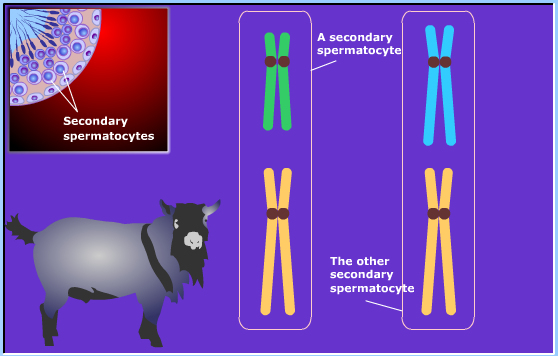
Each secondary spermatocyte divides to yield four spermatids.
The sister chromatids have separated so each spermatid contains half the full number of chromosomes.
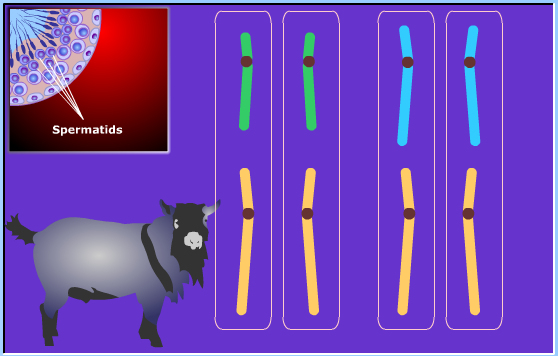
The spermatids develop into sperm.
Two sperm have a Y chromosome and two have an X chromosome.
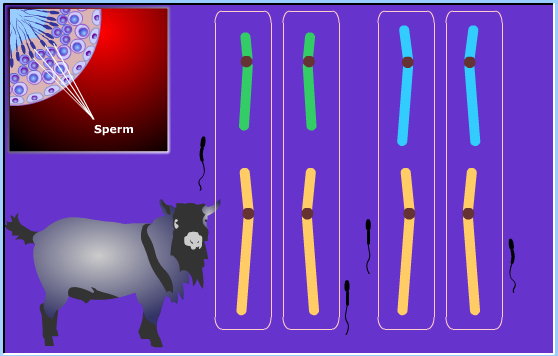
The female goat also has 30 pairs of chromosomes.
30 chromosomes come from her sire and 30 come from her dam.

The female goat has two X chromosomes.
The autosomes are similar to the autosomes of the male goat.

The chromosomes in the primary oocytes have duplicated and are joined at the centromeres.
The primary oocytes were formed before the doe was born.
She will not make any new oocytes for the rest of her life.

To make things simple we will look at just two chromosome pairs,
the X chromosomes and a representative autosome pair.

Just before the female goat is born, the homolgous chromosomes in the primary oocyte
will crossover and exchange genetic information.
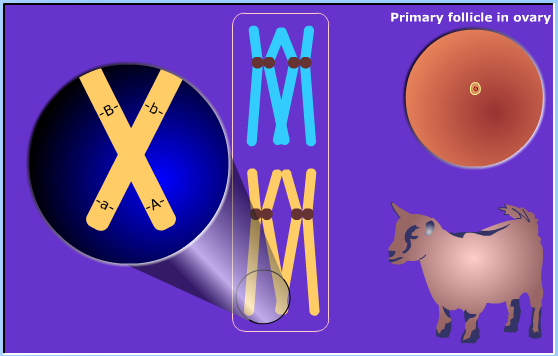
A segment of one chromosome has exchanged with the homolgous segment of the other chromosome.
Crossover also occurs between the X chromosomes.
This important step results in genetic variation.

About the time that the egg is ovulated the first meiotic division occurs.
The homologous chromosomes separate as the egg divides to the secondary oocyte stage.
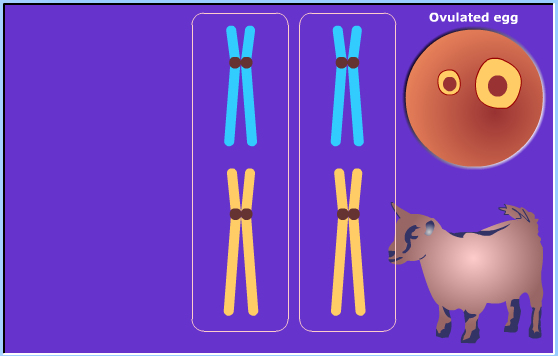
One oocyte, called the first polar body is smaller.
It cannot become a mature egg and is lost.

The second phase of mieosis occurs at the time that the sperm penetrates the egg.

The sister chromatids now separate as the secondary oocyte divides.

The tiny polar body is lost.
The nucleus of the egg has half of the full number of chromosomes or 30 chromosomes.
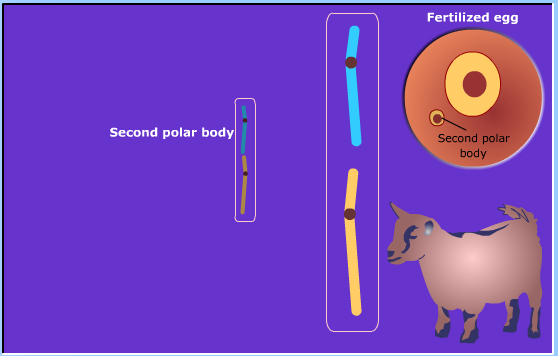
Once the sperm has penetrated the egg each forms a pronucleus.

The nuclei fuse.

The zygote now has the full number of chromosomes.
30 from the sire and 30 from the dam.
Notice that the chromosomes are not duplicated at this stage in the egg.
